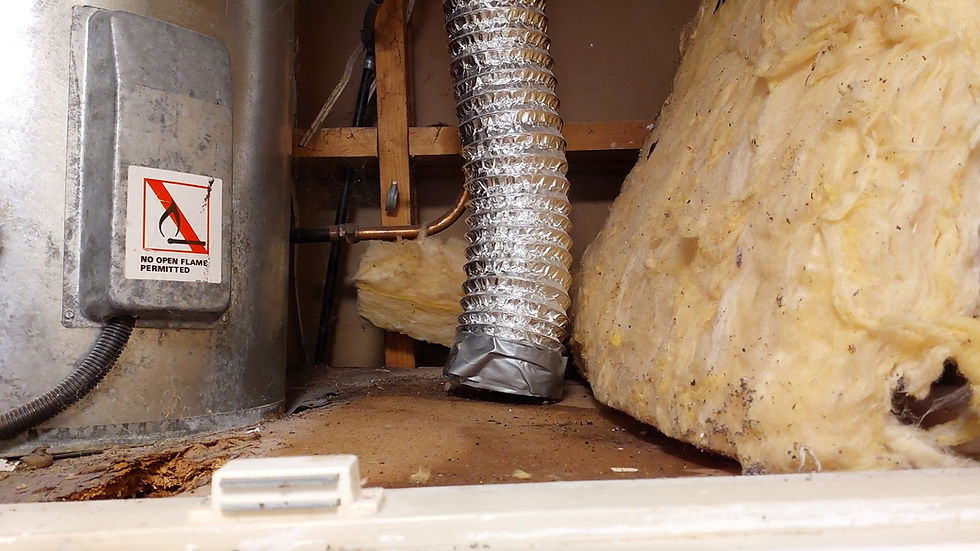The Hidden Hazards of Venting Bathroom or Kitchen Fans into the Roof Space
- Alex Willis
- Aug 21
- 2 min read

In many homes, exhaust fans from bathrooms or kitchens are incorrectly vented into the attic rather than outside. This mistake may seem minor, but over time, it can wreak havoc on your home’s structure, energy efficiency, and indoor air quality. Here’s why it’s critical to address—or better yet, prevent—it.
1. Mold, Mildew & Structural Decay
Exhaust fan moisture should be expelled outside. When vented into the roof cavity, it condenses on wood, insulation, and metal connectors, fostering a breeding ground for mold, mildew, and dry rot. Over time, this compromises the structure and insulation of your roof.
2. Health Risks & Indoor Air Quality
Moist, poorly ventilated roof space become incubators for mold spores and bacteria. These contaminants can spread into living areas, triggering respiratory issues, allergies, and more.
3. Energy & Insulation Inefficiency
Humidity degrades insulation effectiveness, causing heat loss in winter and reduced cooling efficiency in summer. Energy losses may balloon by up to 40% due to moisture-soaked insulation.
5. Code Violations & Resale Issues
Modern building codes clearly prohibit venting into roof spaces, soffits, or crawl spaces. Fans must discharge directly outdoors via roof, gable wall, or approved exterior vent caps. Such improper installations can be flagged during home inspections, potentially delaying or devaluing a sale—and even voiding insurance claims if damage arises.
What You Should Do: Preventive & Remedial Measures
Step | Why It Matters |
Inspect the duct termination location | Attic discharge is a red flag—vent should exit through roof or an external wall. |
Use rigid, insulated ducting | Reduces condensation and ensures moisture doesn't collect mid-run. |
Install proper vent caps with dampers | Prevents backflow, animal entry, and unwanted airflow. |
Keep duct runs short and direct | Minimizes condensation and improves fan efficiency. |
Let fans run post-use | A few extra minutes clears lingering moisture from your space. |
Hire a qualified pro if unsure | A certified contractor can audit your setup and bring it up to code safely. |
Final Thoughts
Venting exhaust fans into the roof space may seem harmless, but the consequences are far from trivial—ranging from structural damage and mold to rising energy bills and health risks. The solution is straightforward: vent directly outside through a proper channel. It’s a small effort that can prevent major costs and headaches down the line.








Comments